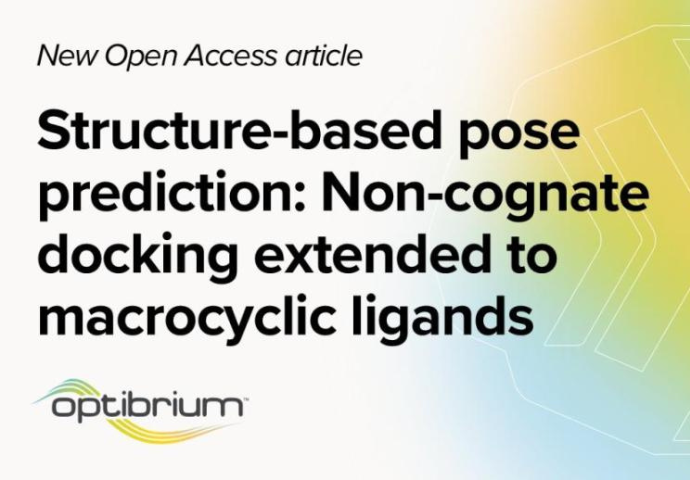CAMBRIDGE, UK, 22 October 2024 – Optibrium, a leading developer of software and AI solutions for molecular design announces the publication of a peer-reviewed study in the Journal of Computer-Aided Molecular Design, ‘Structure-Based Pose Prediction: Non-cognate Docking Extended to Macrocylic Ligands’. The paper demonstrates that Surflex-Dock can accurately predict the binding conformation and orientation (pose) of unknown (non-cognate) ligands, including macrocycles.
Molecular docking is a relatively easy process for re-docking known (cognate) ligands of proteins, exhibiting very high success rates. However, in any real-world application, it is unknown binding partners that are under investigation, such as predicting the binding mode of a candidate ligand during a drug design process. Predicting binding interactions in these scenarios is referred to as non-cognate molecular docking, which typically has a much lower success rate. Non-cognate docking is particularly challenging for macrocyclic compounds given their size and flexibility.
Using a data set of ~1000 ligands, the study compared different molecular docking methods to predict the non-cognate binding of non-macrocyclic and macrocyclic ligands. Using the Surflex-Dock method, correct poses among the two top-ranked predictions were identified 80% of the time, a success rate far exceeding those observed for AutoDock Vina and Gnina, particularly for macrocyclic ligands. In fact, the non-cognate macrocycle docking performance of Optibrium’s method rivals other reports of cognate non-macrocycle small molecule docking.
In addition to demonstrating the outstanding performance of Surflex-Dock for complex docking scenarios, the paper provides a benchmark for the community to determine the success of other methods on real-world molecular design applications.
Ann Cleves, VP of Application Science, BioPharmics Division, Optibrium, said: “This paper reports, for the first time, highly accurate results for macrocyclic ligand conformation and orientation prediction which match the accuracy shown for diverse non-macrocyclic ligands. Crucially, the results characterising Surflex-Dock’s performance were achieved with ensembles of macrocycle-naive protein structures. Setting a new benchmark for non-cognate docking, our research underlines how Surflex-Dock is leading the field for chemists developing both macrocyclic and small molecule modalities and validates the use of Optibrium’s BioPharmics platform for developing macrocyclic therapeutics.”
Want to learn more about Surflex-Dock?
On 14 November, two of the authors of this paper, Ajay Jain and Ann Cleves, will discuss the latest developments around the Surflex-Dock method in a webinar. They’ll also provide a hands-on demonstration of Surflex-Dock in action addressing a variety of docking examples.



